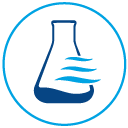
Understand Which Stormwater Sampling Methods Work the Best
1. Stormwater Testing Overview
Stormwater testing on your property can be a daunting task, especially when fulfilling the many specific requirements of a stormwater testing permit. Besides the training of employees and fulfillment of paperwork and preparations there is the sample collection that must be completed on a regular basis. What is the most effective way to collect these samples?
When collecting samples for stormwater testing it is very important to practice the very best water testing techniques. This means a couple of things: first, it means using the best sampling methods to collect water samples from your property so that lab tests will give you the highest quality results. And second, it means using the very best water quality sampling method available to you before sending those samples to a highly qualified, reputable and certified water testing laboratory.
2. Follow the Very Best Sampling Methods
When taking samples it is always best to carefully read the instructions and closely follow the procedures. A few keys to remember in order to get the best results are:
- Always wear gloves when taking samples to avoid cross-contamination.
- Attach a sampling collection bottle to a pole with filament strapping tape when collecting from a sewer or if hand collection would only allow collection from stagnant water.
- Never allow for cross contamination: do not touch the rim/opening of the collection bottles.
- Sample from flowing water with the bottle opening facing upstream.
- Do not take samples from stagnant water.
- Do not overfill your sample bottles.
These water testing techniques will keep your sample clean from contamination and will give you the most accurate results.
3. Types of Test Sampling Methods:
Of all the many different methods laboratories have used to collect and test stormwater runoff samples over the past decade, only two main sampling methods dominate in the market. The following two methods have proven to give the best and most reliable results over the years. And as with any competition between just two major competitors the battle for supremacy can get fierce. Recent tests comparing the two methods have produced some interesting results. Collections were made using a recirculating test loop system with repeating conditions for each sampling methodology. Once collected, the data was evaluated to see if both methods produced similar concentration scatter and sediment removal efficiency.
Mass Balance
The first of these water testing techniques for collection involves each injected and captured sediment mass being quantified and used to determine the sediment removal efficiency at each designated test flow. All captured material was collected in designated pre-weighed, nonferrous trays and dried in a laboratory oven in accordance with ASTM Method D 4959-16. Each tray was weighed on a calibrated digital scale.
The mass balance results tested four low flow samples (112 gallons per minute) and in these tests removal efficiencies averaged 55.4% without any outliers. In the four high flow samples (448 gpm) they performed with an average removal efficiency of 33.3% without any outliers.
Effluent Sampling
With Effluent sampling three different collection methods were used: End of Pipe (EOP) with 2L beaker, EOP with 1L large mouth bottle, In-line with 1L bottle. At the low flow level (112gpm) these sampling methodologies produced results very similar to the mass balance tests. The average removal efficiencies were 56.1, 56.6, and 57.0 percent.
Results of the high flow tests (448gpm). These three produced average sampling removal efficiencies of 38.7, 46.6, 40.5. There were, however, several outliers in the data which, when removed from the averages, lowered a couple of them a bit.
4. Which method is more effective?
The measured effluent concentration scatter of each sampling methodology was fairly consistent for the 0.25 cfs (112 gpm) flow tests conducted, with no definitive outliers. This indicates that each methodology is equally capable of collecting a representative sample at a low-flow condition.
However, the 1.0 cfs (448 gpm) tests produced individual mass balance results that were a few percentage points lower than the three effluent samplings on average. The individual sampling sediment removal efficiency results were on average several percent higher even when the outliers were dropped from consideration.
In general both water sample testing methods were quite effective especially when the outliers in the effluent samplings were dropped from the averages. However, on both measurables the effluent samplings performed slightly better in these tests than the mass balance especially at higher flow levels.
5. Conclusion
The main conclusion is that the two main water sample testing methods are both highly effective at collecting stormwater runoff samples and that the effluent sampling method in these tests performed slightly more effectively than the mass balance method, but only really with the high flow capacity tests.
Perhaps the most important factor is not which of these sampling methods you choose to use, but more importantly the quality of the environmental testing laboratory you use for testing your samples. This is where Torrent Laboratory stands out from the rest as the premiere lab in Northern California. We have the highest certifications, the most experienced engineers, the most up to date technology and equipment and the fastest turnaround times in the industry.






